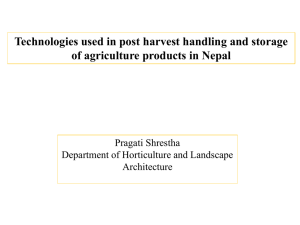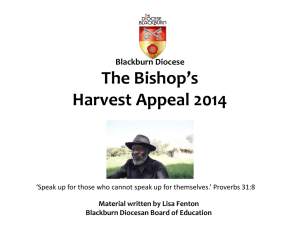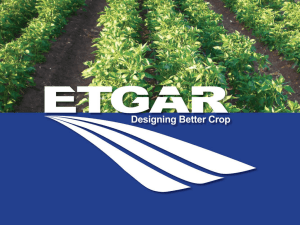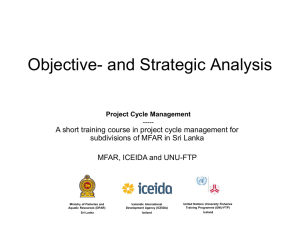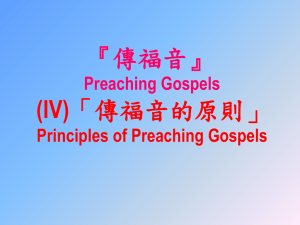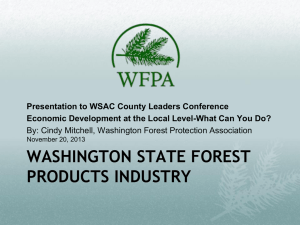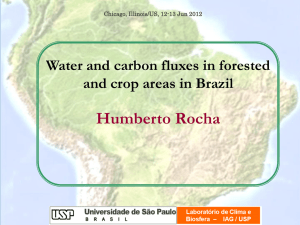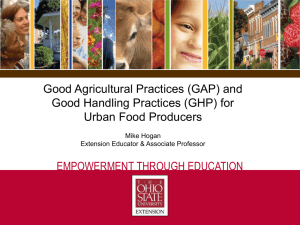forests - University of Puget Sound
advertisement
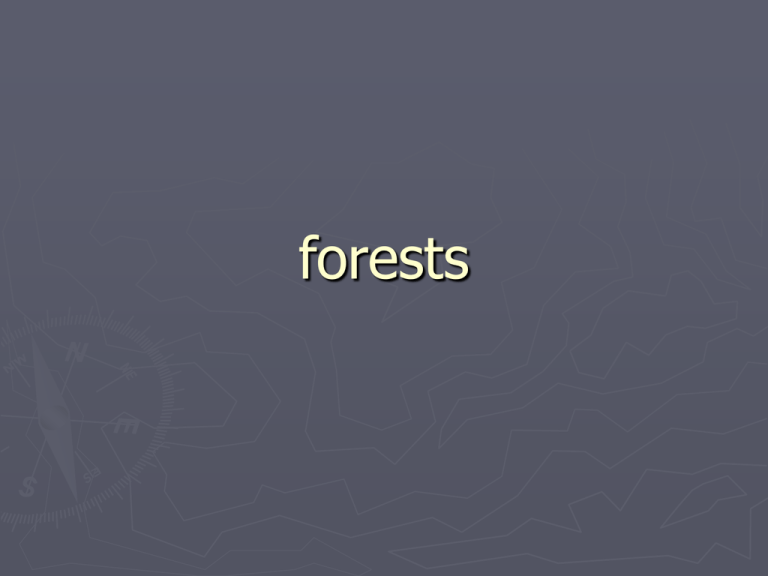
forests characteristics ► saleable ► left commodity when harvested standing, capital asset increased growth following year environmental services (watershed protection, wildlife habitat) ► harvest ► time or wait? btw initial investment (planting) and recovery (harvesting) LONG harvesting decision ► when to harvest? biological dimension economics dimension biology ► growth measured in cubic ft ► distinct growth phases slow / rapid / slow ► abstracting from differences in weather / fertility / pests / fire / etc ► biological model: douglas fir tree growth, Douglas Fir mean annual increment (MAI) ► MAI = cumulative volume end of decade / cumulative yrs of growth ► biological decision rule: harvest when MAI maximized biological harvesting decision annual incremental growth ► AIG= change in volume / change in years marginal growth ► if AIG>MAI, MAI increasing ► if AIG<MAI, MAI decreasing similar to MC and ATC (GPA example) economics ► use basic biological growth model as basis for economic decision rule ► harvest benefits at age that maximizes PV of net two important costs 1. planting costs (example: $1,000) • • 2. borne immediately no discounting harvesting costs (example: $.30 / cubic ft) • • time of harvest discounted economic harvesting decision optimal harvest age ► discounting shortens optimal harvest time less tolerant of slow timber growth comparing no harvest (increase in value of timber) to harvest (sell and invest) ► high discount rates also destroy incentive to replant sample problem Age Volume (cubic ft) 10 700 20 1,000 30 3,000 40 6,000 50 8,000 Price: $2 Planting cost: $1,000 Harvest cost: $0.50 Discount rate: 3% when to harvest using biological rule? using economic rule? land conversion ► land use should be allocated to highest valued ► conversation occurs when relative values of competing uses change allocating land to competing uses Net benefits per acre efficient allocation ► closest ► other land to agriculture (A) land to forest (B) ► maximizes ► efficient net benefits conversion occurs when these net benefit functions change changing net benefits ► agriculture population increases (need more food) new technology lower costs ► forests demand for forest products changes sources of inefficiency ► perverse incentives for landowner privately owned forests ►externalities ►undervaluing standing forest: harvest inefficiently large amount of timber publicly owned forests ►Brazil: reduced taxes for agriculture; squatting (more deforestation, more land acquired) ►US: concession agreements (limited term, too cheap) sources of inefficiency ► perverse incentives for nation biodiversity ►lost biodiversity: external cost not borne by individual loggers global warming ►lost absorption and increased burning: external cost not borne by individual loggers sustainable forestry? depends on what kind of sustainability ► economic sustainability non-declining welfare among generations fully compatible with efficiency as long as economic gains from harvest are reinvested and shared with future environmental sustainability ► be able to harvest forever ► harvest growth, leaving volume the same ► efficiency ► need not necessarily compatible to compare increasing value from delayed harvest increasing value from harvest + investment how to correct inefficiencies? ► charge harvest concessionaires full social cost of ► debt-nature swaps cancel debt in return for preservation ► royalty payments preservation of biodiversity paid for genes obtained from resources


